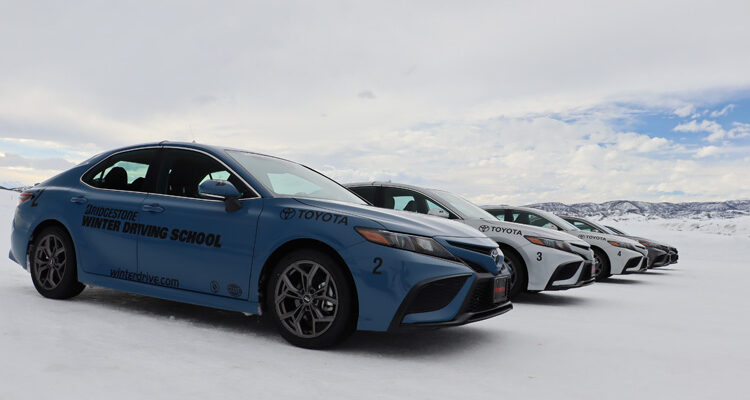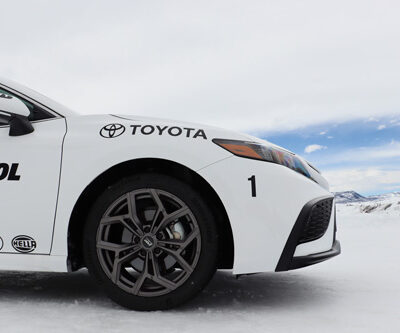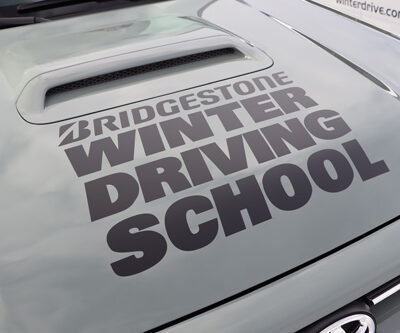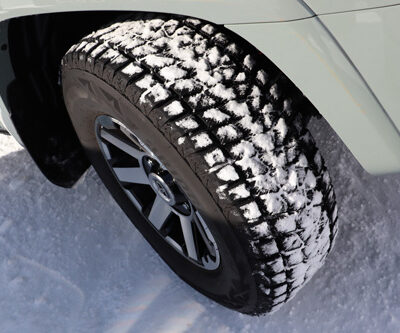In Canada – and let’s be honest, many parts of the US as well – the debate rages on: to snow tire or not to snow tire, is AWD enough, and does any of it matter if you don’t know how to properly drive in the snow in the first place? Bridgestone aims to answer all these questions with their Winter Driving School, locating in Steamboat, CO.
Peppered with over 30 feet of elevation changes, odd-camber turns and even a snow-covered 300-foot skidpad, it has been designed to test all manner of winter driving manoeuvres. Bridgestone is proud of the facility, proclaiming it to be the oldest of its kind in the country; the OG, if you will.
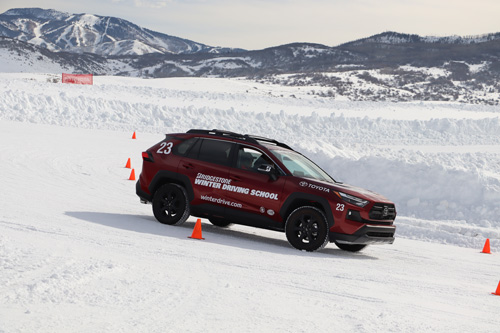
Indeed, just stepping off the plane at Hayden airport just outside of Steamboat is an experience, and one that right of the bat, demonstrates just what you may be in for.
Located on a plateau surrounded by the peaks of the San Juan mountains, stepping off the plane at airport code HDN feels like you’re surrounded by one part Hoth, one part the moon and all parts spectacular. When it comes time to test winter tires and to learn winter driving habits, this is surely the place to do it.
Winter Driving for Dummies
In places where snowy conditions aren’t the norm – and even in places where they are – knowing the right actions and inputs required for good winter driving don’t necessarily come naturally.
So much so that Bridgestone has a set of three rules to adhere to when it comes to driving in the winter: vision, adjust speed for conditions and separation of controls.
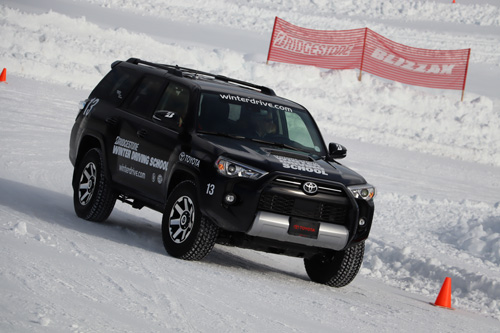
While those first two seem obvious – more on the third element later – think about it; you’re driving a route you’ve driven zillions of times before. Perhaps it’s the route home from the office, or even the highway drive to your favourite ski hill. Usually, you’re doing it almost subconsciously because you’ve done it so often –- and crucially, in the same conditions — but that’s where trouble arises.
What if it’s snowing one day? What if the ground’s unseasonably slick? It’s here where thinking about those first two rules comes in to play because even we have to admit that there have been times where it’s registered that there’s snow on the ground and it’s slippery, but only in a surface-level way. We’re still carrying the speed we normally do, still starting to brake at the same time as we always do when reaching a well-known intersection.
Which is why, according to Bridgestone, one of the first things you need to do when you register bad conditions is to make a conscious effort to adjust your speed because that may not come through naturally.
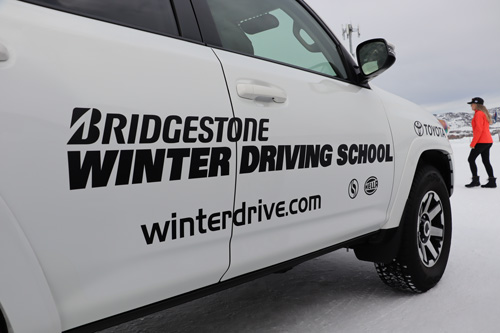
When it comes to vision, it’s much the same; look as far down the road as you can, even as conditions worsen because being able to see that stricken pickup 100 yards away is the first key to being able to avoid it – but don’t look too long, because your car goes where your eyes do and you don’t want to be pulled towards an obstacle.
That’s why as conditions worsen, you want to keep focused on a spot ahead of you in the middle of your lane, because that’s where you’ll want to be.
What about that “separation of controls” thing?
This is where we really see the benefits of the Winter Driving School.
The key here is to remember that while you may be able to instruct your car otherwise, it can really only do one thing at once – say, braking or turning – to the best of its abilities. Ask it to do more, and you risk overloading both its and your bandwidths.
To demonstrate this, we took to the skidpad in the 4WD Toyota 4Runner equipped with Bridgestone’s Blizzak DM-V2 winter rubber and they would have a lot of work to do because both stability control and traction control were turned off. So it was up to the tires and our wits to stay under control. That meant using the vehicle’s weight to our advantage, but also ensuring that we kept all the inputs smooth, direct and decisive; slow down and feel the rear end step out a little as weight comes forward, release brake, start steering until you’ve achieved the angle of attack you want, leave the wheel alone and apply throttle to correct the slide. All singular inputs and if done right, you can almost set the wheel at the right angle and apply just the right amount of throttle to slide yourself around the whole pad.
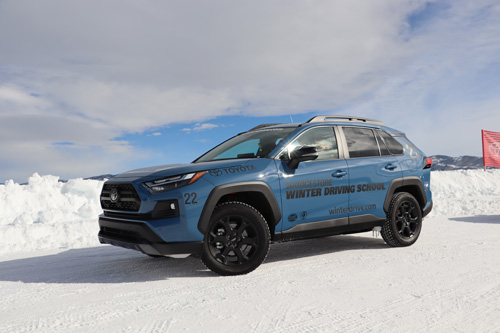
Done wrong, and you’ll start to understeer; the wheels are turning but not tracking so you’re effectively snow plowing your way forward – and likely off-piste.
Speaking of no electronics…
TCS and STM are two driver aids that can be (mostly) switched off with ease; usually a press of a button or a quick jab or two at a touchscreen.
ABS, on the other hand, is a different animal in that it can never be switched off…unless you’re a specially-prepped Toyota for use as a driver-training tool.
So it goes that many of the vehicles at the Bridgestone school – the aforementioned 4Runner, the RAV4 crossover and the Camry sedan – have been equipped with an ABS kill switch that fully deactivates the system.
For those that need a refresh: what ABS does is “pump the brakes” if it senses the wheels begin to lock up, thereby keeping the weight balanced over all four wheels as much as possible and allowing them a chance to gain purchase. That’s why you feel the pedal pulsating beneath your foot.
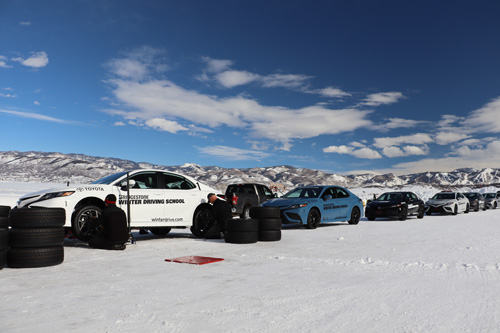
Without ABS, then, it was once again up to the driver to modulate the brake on their own – which is what we did. We were instructed to reach 30 MPH heading downhill in a RAV4 Trail and proceed to hit the brakes and force a lockup. At that point, the temptation is to keep braking, but this is wrong. It raises contempt in the hearts of the traction Gods. What you should be doing is exactly what the ABS does; release, and come back down hard to reset everything and balance it out. We weren’t provided with tools to measure this but the difference in distance when simply holding down the brakes versus pumping them was palpable.
“But wait!” I hear you saying. “Why learn how to brake without ABS when every modern car has it?” That’s a fair question, but you have to look back at that “separation of controls” mantra to understand why knowing how to survive sans ABS is important. You see, ABS will help you out when it comes to shortening stopping distances, but you still have to learn how to steer yourself out of a tough situation.
So, about those tires…
While working on our snow-driving chops was obviously the main event, Bridgestone did have a selection of tires for us to sample in the conditions: the Blizzak winter tire, the WeatherPeak all-weather tire and the Potenza Sport AS all-season tire.
The Blizzak winter tires provide extra-aggressive blocks and edges for more surface area on the ground. Bridgestone also provides a tech called Multicell, which – contrary to what you might think – actually allows more moisture into the tire, removing it from the tire’s surface for better traction. Needless to say, the way you could literally hear the tire grabbing all that snow into its tread – remember; the best traction is snow-on-snow traction – and munching away.
Turning to the Weatherpeak all-weather tire; of the three, this is the best all-rounder, a true four-season tire that works well in all conditions. I was surprised to find how well these performed in the snow; I expected more slip because is it really a four-season tire? It did its job mightily, but you will get more obvious slip than the snow tire and if you’re going to be spending time in snow and slush, the winter rubber is still the better way to go.
The real eye-opener for me, however, was the way the Camrys outfitted with the Potenza all-season rubber faired. We took them out on a fast rally-style track and while I questioned Bridgestone’s logic at first, by the first half of the lap I could see why they did it. Put simply, the AWD-equipped Camry was tough to unseat even with the more relaxed rubber. Yes; you will feel just that much more instability than you will from the more focused all-weather rubber (the Blizzak clearly has more traction), but my guess is you’d only really feel that if you did a back-to-back comparo as we were doing. In the end, all we ended up getting was a bigger smile on our face because we could drift the Camry just that much more on the all-season rubber, and have just that much more fun.



